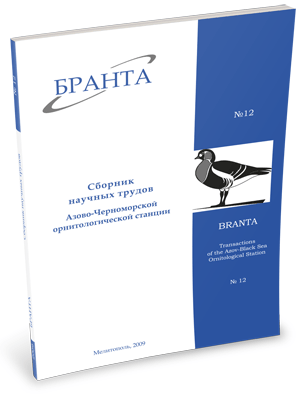
Transactions
of the Azov-Black Sea Ornithological Station



Changes in breeding avifauna of Anseriformes of the Crimea connected with anthropogenic succession of Sivash and steppe part of the peninsula
Grinchenko A.B.
White-headed Duck was known as a rare migrating species in the Crimean peninsula until 1970s. There are a dozen references in the literature on occurrence of this species during this period. In spring 2006, Ukrainian Society for the Protection of Birds has carried out a survey of all large water bodies and coastal areas along Azov and Black sea on Kerch peninsula in order to confirm migration of the species through the area. It was revealed that autumn migration of White-headed Duck through the Crimean peninsula is extended and continues from August to November. Only single birds stay on the peninsula during winter. Spring migration of the species takes place in March, particularly in the first decade of the month. Occurrence of White-headed Duck in February and April is irregular. The species is associated with certain type of water reservoirs; particularly it is rarely noticed on fresh and hyper-salty waters. Most birds were recorded on three water bodies, namely YarilgachLake, eastern part of Astaninski flooded area and small lake near Primorske village. This selective distribution of the species is likely associated with the specific forage conditions. Further survey of the food supply on these lakes will show if such factor has significant impact on the distribution. Migration of the species in Crimea occurs during nighttime only. Migrating White-headed Ducks reach Crimea through AzovSea; they belong to the eastern part of the population with breeding grounds in Eastern Manych. In spring, White-headed Ducks return from Turkish or Mediterranean wintering grounds though the Kerch peninsula. It is interesting that number of males in migrating groups constitutes only 15-20% of the total number of birds in Crimea. Most males supposedly winter in more eastern areas, including Caspian coastal areas where large wintering groups of the species are currently registered in Azerbaijan.
Read the paper in a PDF file